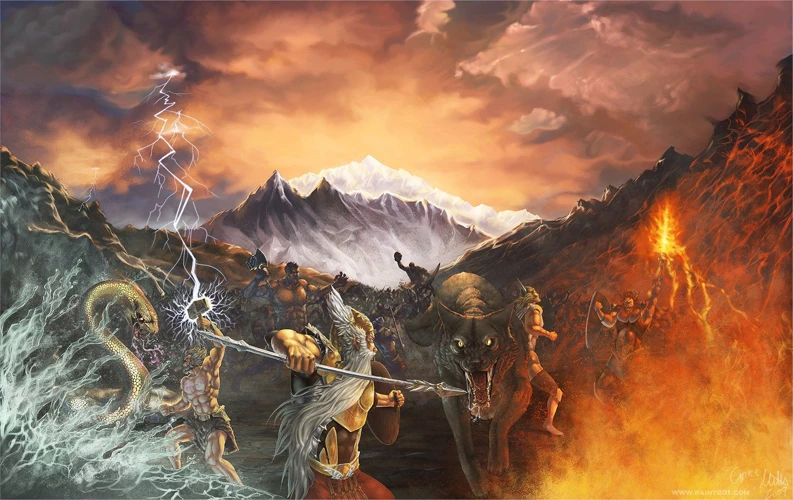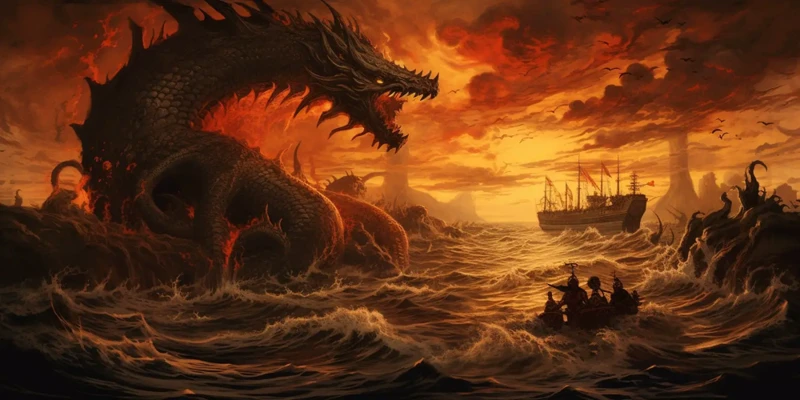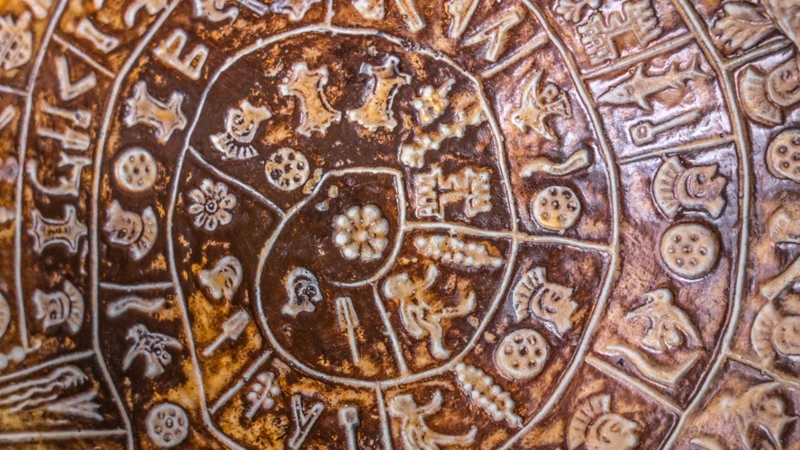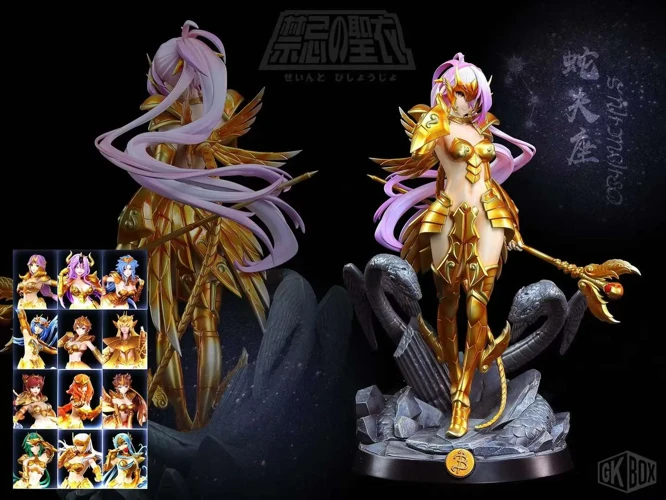The Story of Ragnarok: The End of the Norse Gods is a riveting tale deeply rooted in Norse mythology. This ancient legend speaks of an apocalyptic event that heralds the destruction and rebirth of the world. Ragnarok, a cataclysmic battle between gods and giants, is a captivating saga that has captivated the imaginations of people for centuries. This article explores the myth of Ragnarok, the triggering events, the role of key characters, and the consequences that unfold in its wake. Additionally, it delves into the interpretations, cultural impact, and continued fascination with this epic narrative. Prepare to be transported to a realm where gods and giants clash, and the fate of the cosmos hangs in the balance.
Contents
- The Myth of Ragnarok
- The Aftermath of Ragnarok
- Interpretations and Cultural Impact
- Conclusion
-
Frequently Asked Questions
- What does Ragnarok mean?
- Who are the main characters in Ragnarok?
- What triggers the events of Ragnarok?
- What battles and confrontations occur during Ragnarok?
- What is the role of the key characters in Ragnarok?
- What happens after Ragnarok?
- What is the significance of Ragnarok in Norse mythology?
- How has Ragnarok been interpreted symbolically?
- How has Ragnarok influenced art and literature?
- Why does Ragnarok continue to fascinate people today?
- References
-
Frequently Asked Questions
- 1. What is Ragnarok?
- 2. Is Ragnarok based on a prophecy?
- 3. What triggers Ragnarok?
- 4. Who are the key characters in Ragnarok?
- 5. How does Ragnarok unfold?
- 6. What happens after Ragnarok?
- 7. What is the significance of Ragnarok in Norse mythology?
- 8. How has Ragnarok influenced art and literature?
- 9. Are there any symbolic elements in the story of Ragnarok?
- 10. Why does Ragnarok continue to fascinate people today?
- References
- Read More
The Myth of Ragnarok

In Norse mythology, Ragnarok is a cosmic event that unfolds as a series of prophecies and cataclysmic battles. The fateful day of Ragnarok marks the end of the world and the gods themselves. According to the Norse belief, Ragnarok is preceded by a period of growing tension and conflict, as depicted in the Völuspá, an ancient Norse poem. This prophesied destruction sets the stage for the epic battles between gods and giants, marking a climactic clash of elemental forces. The myth of Ragnarok is filled with poignant symbolism and depicts the cyclical nature of existence, where destruction paves the way for renewal. It encompasses the themes of destiny, sacrifice, and the inherent fragility of even the mightiest beings. The captivating narrative of Ragnarok continues to intrigue scholars and enthusiasts alike, as it offers a glimpse into the Norse understanding of the cosmos and the struggles of divine beings.
The Prophesied Destruction
The Prophesied Destruction in the myth of Ragnarok is a central element that sets the stage for the cataclysmic events to come. According to Norse mythology, the destruction and end of the world are foretold in the prophetic poem known as the Völuspá. This ancient text, attributed to a seeress, describes the sequence of events leading up to Ragnarok. The seeress prophesies the crumbling of Yggdrasil, the great World Tree that connects the nine realms of Norse cosmology. The poem also speaks of the release of monstrous creatures and the descent into chaos and darkness. These prophecies, passed down through generations, reinforce the belief that the gods and the world itself are destined to meet their ultimate demise. The Prophesied Destruction signifies the inevitability of Ragnarok, portraying a grim and foreboding future for the gods and all beings in the Norse cosmos. Embedded within this prophecy is a sense of impending doom and the understanding that even the mightiest of beings cannot escape their destined fate.
The Triggering Events
The triggering events of Ragnarok are pivotal in setting the stage for the cataclysmic battle that brings about the end of the Norse gods. The first event is the breaking of the chain that binds the monstrous wolf Fenrir, who represents chaos and destruction. This feral creature, progeny of the trickster god Loki, unleashes its fury upon the world, wreaking havoc and signaling the coming of Ragnarok. Another significant event is the release of Loki, who had been imprisoned after causing mischief among the gods. Loki, driven by vengeance and resentment, rallies the giants and other malevolent forces to join him in the final battle against the gods. The sounding of Gjallarhorn, a great horn that echoes throughout the nine realms, serves as a call to arms and a harbinger of the approaching apocalypse. The giants, led by the fire giant Surt, march upon Asgard, the realm of the gods, bringing with them destruction and chaos. As the gods prepare for the ultimate confrontation, the world is plunged into darkness, with catastrophic events unfolding across the realms. These triggering events symbolize the inevitability of Ragnarok and the forces that bring about the downfall of the gods. The interconnectedness of the actions and consequences underscores the tragic nature of their fate. The triggering events serve as a reminder that even gods are not exempt from the cycle of creation and destruction that governs the cosmos.
Battles and Confrontations
In the climactic events of Ragnarok, the world becomes a battleground for gods, giants, and monsters. The battles and confrontations that ensue are epic in scale and laden with symbolic significance. One of the most iconic confrontations is the showdown between the mighty god Odin and the monstrous wolf Fenrir, foretold in Norse mythology. This cataclysmic battle sees Odin, accompanied by his faithful warriors, attempting to subdue the colossal wolf. The outcome of this encounter is pivotal, as it represents the struggle between order and chaos. Another notable confrontation occurs between the thunder god Thor and the World Serpent, Jormungandr. This fierce battle takes place in the midst of an apocalyptic storm, where Thor valiantly battles the serpent, but ultimately succumbs to its venomous bite. This clash signifies the never-ending cycle of destruction and renewal inherent in the myth of Ragnarok. Additionally, the fire giant Surtr, wielding a flaming sword, engages in a final battle against the gods. This pivotal battle results in the incineration of the world, plunging it into chaos and marking the conclusion of Ragnarok. The battles and confrontations of Ragnarok encapsulate the cosmic struggle between order and chaos, fate and free will, and the impermanence of existence. This cataclysmic clash defines the end of the Norse gods and the world they inhabit, leaving a lasting impact on Norse mythology and the understanding of the eternal battle between opposing forces.
The Role of Key Characters
In the myth of Ragnarok, the key characters play crucial roles in the unfolding of this epic event. One such character is Odin, the father of the gods and the All-Father. Odin’s knowledge and wisdom allow him to foresee the coming destruction, and he strives to gather a force of worthy warriors to defend Asgard, the realm of the gods. He represents the leader and protector of the gods, making strategic decisions to prepare for the final battle.
Another prominent character is Thor, the god of thunder and Odin’s son. Known for his immense strength and bravery, Thor wields his mighty hammer Mjolnir, defending both gods and mortals. He becomes a symbol of unwavering courage and relentless determination in the face of the impending doom.
Loki is a complex character who plays a significant role in Ragnarok. As a trickster god, Loki’s actions often have unpredictable consequences. He is both a friend and a foe to the gods, creating tension and chaos in the mythical realm. Loki’s deceit ultimately leads to the triggering events that bring about Ragnarok, highlighting the theme of betrayal and its consequences.
Another notable figure is Fenrir, a monstrous wolf who is prophesied to break free from his restraints and wreak havoc during Ragnarok. Fenrir’s strength and ferocity make him a formidable foe, and his part in the battle contributes to the apocalyptic nature of the event.
Among the giants, Surt stands out as a pivotal character. Surt is a giant who wields a flaming sword and leads his kindred in the final battle. As the flames of destruction engulf the cosmos, Surt’s role represents the overwhelming force of chaos and destruction that brings about the end of the world.
These key characters, with their unique attributes and motivations, shape the narrative of Ragnarok and embody the various forces at play during this cataclysmic event. Each character contributes to the tension, conflict, and ultimate fate of the Norse gods and their realm.
The Aftermath of Ragnarok

The aftermath of Ragnarok brings forth a new world order, characterized by both loss and rebirth. In this post-apocalyptic landscape, the surviving gods and remnants of the previous world seek to rebuild and start anew. The destruction caused by Ragnarok lays the foundation for a fresh beginning, where a select few gods forge a path towards restoring harmony and balance. This period of renewal sees the emergence of a new generation of deities who step forward to take on the responsibilities of their fallen predecessors. The surviving gods, such as Thor and Freyr, navigate the ruins of the old world and embark on a journey of healing and resurgence. While Ragnarok signifies the end of the Norse gods as they were known, it also signifies the endless cycle of creation and destruction that permeates Norse mythology, reminding us of the fragile and interconnected nature of existence.
The New World Order
The aftermath of Ragnarok brings forth a New World Order in Norse mythology. This monumental event signifies the rebirth and renewal of the cosmos. As the destructive battles between the gods and giants come to an end, a new era dawns upon the world. The surviving gods gather at the Iðavöllr, a lush and fertile plain, to discuss the future and establish a new order. Baldr, the slain god who returns from the dead, becomes a symbol of hope and resurrection in this new world. The gods, along with a few surviving humans, aim to rebuild and restore harmony to the realms. The vision of a fresh beginning embraces the triumph of life over destruction. This momentous shift in power and the establishment of a new world order create a sense of anticipation and hope for the future of the Norse gods and the realms they inhabit. The transition from chaos to order reflects the cyclical nature of existence and the resilience of the divine beings.
Fate of the Surviving Gods
The in the aftermath of Ragnarok is both tragic and hopeful. As the devastating battles come to an end, it becomes clear that not all of the gods have met their demise. A select few manage to survive the chaos and destruction, ready to face the new world that emerges from the ashes. One such survivor is Baldr, the beloved and pure god of light and beauty. Despite being killed before Ragnarok, Baldr is eventually resurrected and assumes a prominent role in the new world order. Another survivor is Vidar, the silent and strong god known for his immense strength and vengeance. He avenges the death of his father, Odin, by slaying the monstrous wolf, Fenrir, during the final battle. Thor’s sons, Modi and Magni, also manage to survive the cataclysm and inherit their father’s powerful hammer, Mjölnir. These surviving gods, along with a handful of others, represent the resilience and enduring spirit of the divine beings. The fate of the surviving gods is not without its challenges, as they must now navigate a world fundamentally transformed by Ragnarok, but it also holds the promise of new beginnings and opportunities for growth.
Significance for Norse Mythology
The significance of Ragnarok in Norse mythology is profound and multi-faceted. It represents a pivotal event that marks the end of one age and the beginning of another. Ragnarok serves as a dramatic culmination of the gods’ struggles, highlighting their vulnerability and mortality. This cataclysmic event embodies the cyclical nature of existence, where destruction and rebirth are intertwined. It underscores the transient nature of power and the inevitability of change. Through Ragnarok, Norse mythology emphasizes the impermanence of the world and the inevitability of fate. This mythological event also serves as a cautionary tale, reminding individuals of the consequences of hubris and the importance of humility. It reinforces the idea that even the gods are subject to cosmic forces beyond their control. The significance of Ragnarok extends beyond the realm of mythology, resonating with themes of existentialism and the philosophical exploration of the human condition. By contemplating the fate of the gods in Ragnarok, the Norse believed individuals could gain wisdom and insight into their own lives, understanding the transient nature of their own existence.
Interpretations and Cultural Impact

The myth of Ragnarok has left an indelible mark on both ancient and modern cultures, influencing various interpretations and artistic expressions. Scholars and enthusiasts have delved deep into the symbolism embedded within the myth, exploring its themes of inevitable demise, cosmic cycles, and the triumph of chaos over order. The story of Ragnarok has served as a metaphor for cataclysmic events throughout history, from the fall of empires to world wars and natural disasters, resonating with the human experience of witnessing the destructive forces that shape our world. Artists, writers, and filmmakers have drawn inspiration from Ragnarok, incorporating its themes and characters into their work to evoke a sense of cosmic destiny and the fragility of existence. The enduring fascination with Ragnarok can be attributed to its ability to tap into universal fears and aspirations, reminding us of our own mortality and the cyclical nature of life. It serves as a powerful reminder that even gods are not immune to the forces of destruction and renewal that shape our universe.
Symbolism and Allegories
in the myth of Ragnarok run deep, offering profound insights into the human condition and the cycle of life. The story serves as a metaphor for the inevitability of change and the fleeting nature of existence. The battles between gods and giants symbolize the eternal struggle between order and chaos, highlighting the fragile balance that governs the universe. The death of major gods like Odin and Thor represents the transience of power and the eventual decline of even the mightiest beings. The destruction and subsequent rebirth of the world embody the concept of renewal and the cyclical nature of life itself. The portrayal of mythical creatures like the serpent Jormungandr and the wolf Fenrir showcases the primordial forces that both threaten and sustain existence. Additionally, the myth delves into themes of destiny, self-sacrifice, and the interconnectedness of all beings. Scholars have drawn parallels between the Ragnarok myth and other apocalyptic narratives, identifying common archetypal patterns and universal themes. The rich symbolism and allegories embedded within the myth of Ragnarok continue to fascinate and inspire artists, writers, and thinkers across cultures and generations.
Influence on Art and Literature
The myth of Ragnarok has had a profound influence on art and literature, inspiring countless works across various mediums. In art, Ragnarok has been depicted in intricate and dramatic illustrations, showcasing the intense battles and destruction that unfold during this apocalyptic event. These visual representations capture the chaos and epic scale of the myth, often showcasing the gods, giants, and mythical creatures engaged in fierce combat. Artists have drawn upon the symbolism of Ragnarok to explore themes of destiny, the cycle of life and death, and the struggle between order and chaos.
In literature, Ragnarok has served as a powerful source of inspiration for authors and poets. Countless works of fantasy and mythology draw upon the themes and motifs of Ragnarok to create their own intricate worlds of gods and monsters. It has been reimagined in novels, such as Neil Gaiman’s “American Gods,” where a modern-day epic unfolds with echoes of the Norse mythos. J.R.R. Tolkien, renowned for his Middle-earth tales, drew inspiration from Norse mythology, including the concept of a cataclysmic battle in “The Lord of the Rings.”
The influence of Ragnarok extends beyond just the direct retellings of the myth. Its themes of the end of the world, divine conflict, and the renewal of life have permeated various forms of artistic expression. Music, films, and even video games have incorporated elements of this myth into their narratives, adding a touch of epic grandeur and depth to their stories. Whether it is a metal band drawing on the ferocity of the battles or a film weaving in the cyclical nature of existence, the impact of Ragnarok can be felt across an array of artistic creations. Its ability to evoke a sense of awe, existential contemplation, and the enduring struggle of good versus evil ensures its continued relevance and inspiration in the world of art and literature.
Continued Fascination with Ragnarok
The myth of Ragnarok has captivated and continued to intrigue people throughout the centuries, leading to a continued fascination with Ragnarok. This enduring interest can be attributed to the profound themes and powerful imagery presented in the ancient Norse legend. The cataclysmic nature of Ragnarok, with its epic battles and the ultimate downfall of the gods, evokes a sense of both awe and dread. The concept of an intricate web of fate, leading to the inevitable end of the world, sparks contemplation about the cyclical nature of life and the forces beyond human control. The story serves as a reminder of the ephemeral nature of power and the potential downfall of even the mightiest beings. The continued fascination with Ragnarok is evident in its widespread representation in various forms of media, including books, movies, artwork, and video games. Its inclusion in popular culture has allowed the myth to reach a broader audience, keeping it alive and relevant in modern times. This enduring interest showcases the timeless appeal of the story, as it continues to captivate and inspire audiences across generations. Whether as a metaphor for societal collapse or a reflection on the frailty of human existence, the myth of Ragnarok remains a thought-provoking and thought-stirring narrative that continues to captivate the hearts and minds of those who encounter it.
Conclusion

In conclusion, the story of Ragnarok serves as a captivating and poignant testament to the cyclical nature of life and the inevitable clash of opposing forces. This ancient Norse myth explores themes of destiny, sacrifice, and the ultimate fate of gods and giants. It reminds us of the fragility of existence and the constant struggles that shape our world. The aftermath of Ragnarok ushers in a new world order, where a few surviving gods rebuild and create a fresh start. The significance of Ragnarok for Norse mythology cannot be understated, as it exemplifies the Norse understanding of the cosmos and the intricate relationship between gods and mortals. Moreover, Ragnarok’s symbolism and allegorical elements have had a profound impact on art, literature, and popular culture, continuing to inspire and fascinate audiences to this day. The story of Ragnarok will forever remain a testament to the power of mythology and the enduring legacy of the Norse gods.
Frequently Asked Questions

What does Ragnarok mean?
Ragnarok is a Norse term that translates to “fate of the gods” or “twilight of the gods.” It refers to the prophesied cataclysmic event in Norse mythology that signifies the end of the world.
Who are the main characters in Ragnarok?
Some of the main characters in Ragnarok include Odin, the Allfather and ruler of the gods; Thor, the mighty god of thunder; Loki, the trickster god; and Fenrir, the monstrous wolf.
What triggers the events of Ragnarok?
Ragnarok is triggered by a sequence of events, including the murder of Baldr, the beloved god of light and innocence, and the release of the monstrous wolf Fenrir, who was bound by prophecy to wreak havoc on the gods.
What battles and confrontations occur during Ragnarok?
During Ragnarok, there are several epic battles and confrontations, including the final battle between the gods and the giants, the clash between Thor and Jormungandr, the world serpent, and the fateful encounter between Odin and Fenrir.
What is the role of the key characters in Ragnarok?
The key characters in Ragnarok play crucial roles in shaping the outcome of the apocalyptic event. Odin seeks knowledge and sacrifices himself to gain wisdom, Thor battles mighty foes in defense of the gods, Loki aids both sides with his cunning, and Fenrir fulfills his prophecy by wreaking havoc on the gods.
What happens after Ragnarok?
After Ragnarok, a new world order emerges, with new gods and a rejuvenated earth. The survivors of Ragnarok, including some gods and humans, rebuild the world from the ashes of the old one.
What is the significance of Ragnarok in Norse mythology?
Ragnarok serves as a metaphor for the cyclical nature of life, emphasizing the inevitable destruction and rebirth of the world. It underscores the fragility of even the gods and reinforces the Norse understanding of destiny and the cosmic balance.
How has Ragnarok been interpreted symbolically?
Ragnarok has been interpreted as a symbolic representation of the struggles between good and evil, chaos and order, and the transient nature of existence. It highlights the themes of sacrifice, courage, and the redemptive power of destruction.
How has Ragnarok influenced art and literature?
Throughout history, Ragnarok has served as a powerful source of inspiration for various forms of art and literature. It has been depicted in paintings, sculptures, and poetry, capturing the dramatic and epic nature of the myth. In literature, Ragnarok continues to be a subject of exploration and reinterpretation.
Why does Ragnarok continue to fascinate people today?
Ragnarok continues to captivate people today due to its timeless themes of struggle, heroism, and the cycle of life and death. The epic battles and dramatic events of Ragnarok, combined with its rich mythological backdrop, ensure its enduring appeal and fascination.
References
Frequently Asked Questions

1. What is Ragnarok?
Ragnarok is a catastrophic event in Norse mythology that signifies the end of the world and the destruction of the Norse gods and their enemies.
2. Is Ragnarok based on a prophecy?
Yes, Ragnarok is strongly linked to a prophecy known as the “Völuspá” in which a seeress foretells the sequence of events leading up to the cataclysmic event.
3. What triggers Ragnarok?
Ragnarok is triggered by a series of events, including the murder of the god Baldr, the breaking of the ultimate peace treaty, and the escape of the monstrous wolf Fenrir.
4. Who are the key characters in Ragnarok?
The key characters in Ragnarok include Odin, Thor, Loki, Freyr, and Heimdall. Each god plays a crucial role in the battles and events that unfold during the end times.
5. How does Ragnarok unfold?
Ragnarok unfolds through a series of battles and confrontations between gods, giants, and monstrous creatures. The ultimate battle takes place at the plain of Vigrid, where most of the gods perish.
6. What happens after Ragnarok?
After Ragnarok, a new world order is established. The surviving gods, including Baldr and Hodr, along with a few humans, repopulate the earth and begin building a new society.
7. What is the significance of Ragnarok in Norse mythology?
Ragnarok symbolizes the cyclical nature of life and the inevitable downfall of even the most powerful beings. It also emphasizes the themes of fate, destiny, and the transient nature of existence.
8. How has Ragnarok influenced art and literature?
Ragnarok has inspired numerous works of art, including paintings, sculptures, and literary works. It serves as a powerful metaphor for the struggle between chaos and order, and the triumph of good over evil.
9. Are there any symbolic elements in the story of Ragnarok?
Yes, the story of Ragnarok is filled with symbolic elements. For example, the serpent Jormungandr represents chaos, while the god Baldur symbolizes goodness and innocence.
10. Why does Ragnarok continue to fascinate people today?
Ragnarok continues to captivate people because it explores universal themes of destruction, renewal, and the end of the world. It offers a glimpse into a grand cosmic narrative that transcends time and culture.







